Ri Kynjai — The Abode of Clouds in Misty Meghalaya
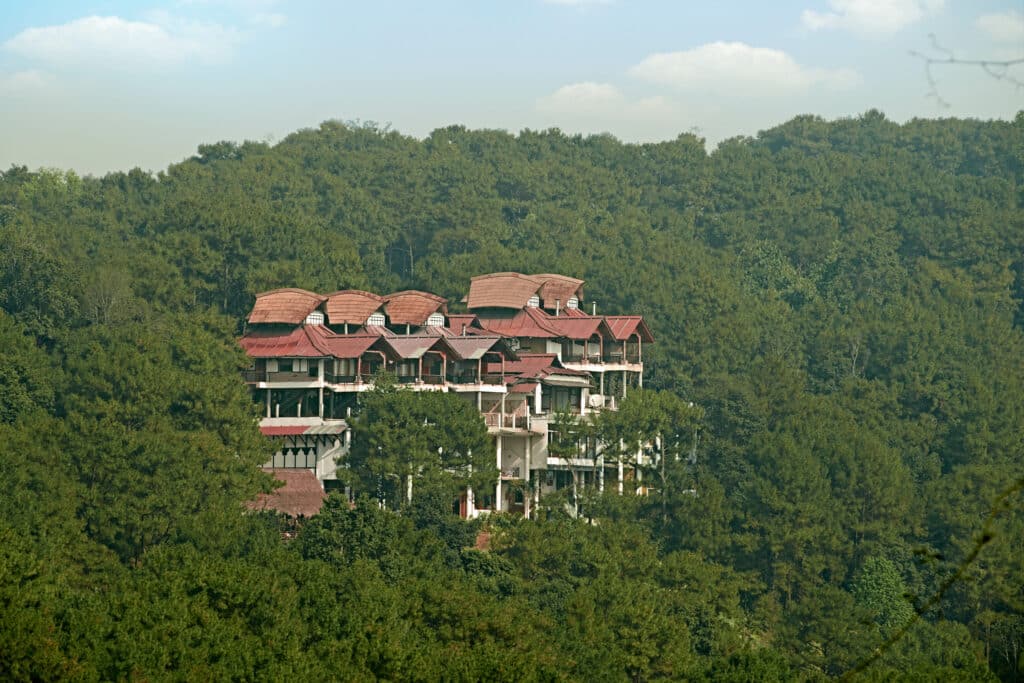
The dazzling blue sky with its angelic white clouds, rolling green sub Himalayan Khasi hills dotted with dense sub-tropical forests, a beautiful lake peeping out of the veil of thick mist and warm betel nut stained smiles of friendly Khasi people greet us as we set our foot in Meghalaya, the land of cloud and rain. Blessed with rich biodiversity and dramatic terrains, this North-Eastern state of India with Assam to its north and Bangladesh to its south is a paradise for nature lovers. The matrilineal state has decked herself up wonderfully for adventure seekers and laid back travelers across the globe.
The purple blossomed trees beside the serpentine mountain way and the soothing breeze assure us the presence of spring and as the car leaves the highway and lands on a bridge that goes straight into the pine forest on the other side, we get the first glimpse of Umiam Lake popularly known as Bara Pani (Big waterbody), the prime highlight of our trip. A short stopover on the bridge would give you an opportunity to ponder over the beauty of the charming lake surrounded by undulated waves of East Khasi Hills. Anglers and fishermen in canoes busy with their catches, frequent movements of speed boats creating novel patterns on the serene water floor and even people idly sitting on the lake shore bear the evidence that Bara Pani is a breathing space for all.
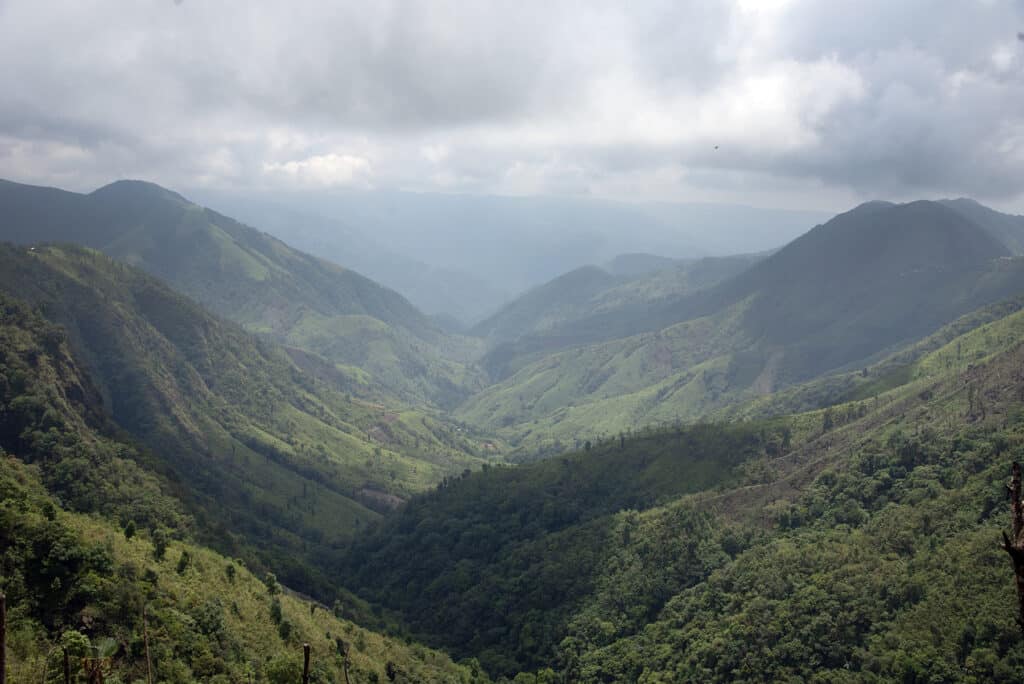
The car enters the thick pine wood and the 15 minutes upward drive takes us to Ri Kynjai, a perfect place to get ourselves introduced to indigenous Khasi architecture, culture and cuisine. The eye-catching roofs of the stilt cottages, devoid of any sharp corners, resemble upturned boats and have certain similarities with ‘knup’ – the bamboo rain shield of the tribal people of Meghalaya – which helps them to resist the thrashing rain and work freely on the steep hilly slopes. Moreover, the vernacular Khasi architecture reminds me that only the traditional Khasi houses survived the devastating 1897 earthquake that had completely ruined the city of Shillong. We both marvel at the earthquake resistant native architecture before taking repose to our lake view cottage.
Built on raised pillars our cozy alcove with its huge balcony overlooks the pristine lake tucked in the middle of convoluted hillocks. The nooks and crannies of the huge cottage, where tradition blends with modernity, showcase cane and bamboo works of the indigenous tribe.
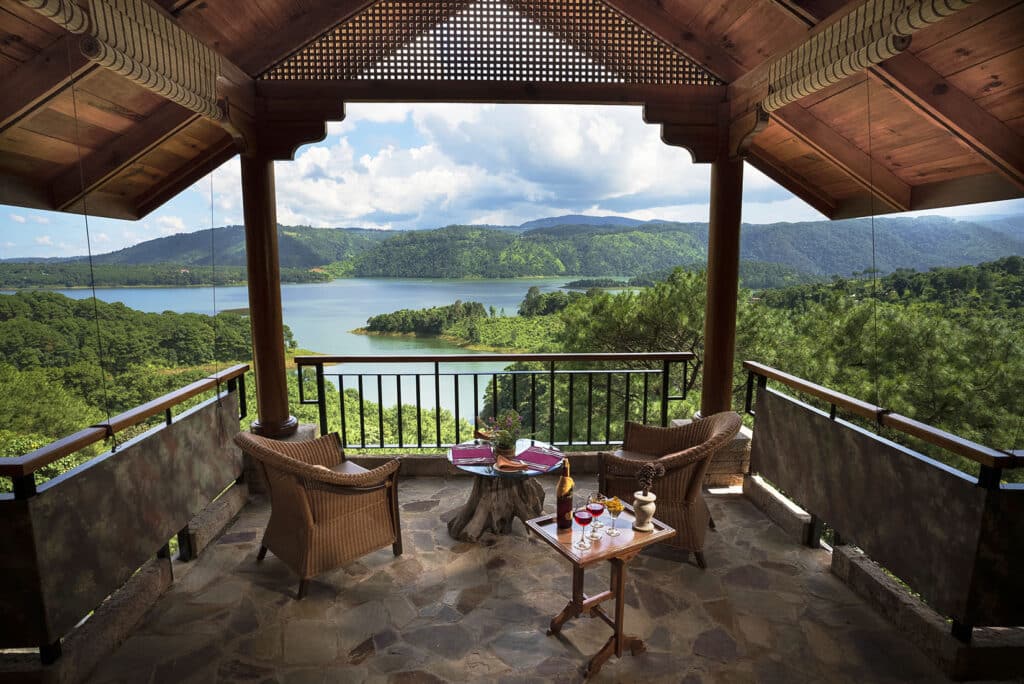
Our culinary journey begins quite late in the afternoon with locally grown red sticky rice and pork bastenga( pork curry prepared with fermented bamboo shoots). Red chili pickle goes well with this local delicacy. Throughout this elaborate lunch session in the inhouse restaurant we marvel at the expansive magical view of the Umiam Lake with interludes of mist and cloud.
A post lunch leisurely stroll to the lakeside through the forest trail together with the woody smell of pine trees and soft tranquil breeze rejuvenate our urban souls. But a sudden rain forces us to abandon our excursion midway and we take a hasty refuge in our cottage. The picture-postcard setting gives way to an all-engulfing darkness with clouds hovering low over the now-greyish expanse of Umiam. Strong winds gush in and a torrential downpour starts. Raindrops on the wooden roof sound like a fleet of horses galloping overhead. Out there, through the white drapery of incessant rain, we can still see the grey Umiam Lake enduring the tumult of the sky in a meditative repose —— a priceless sight, devastatingly beautiful.
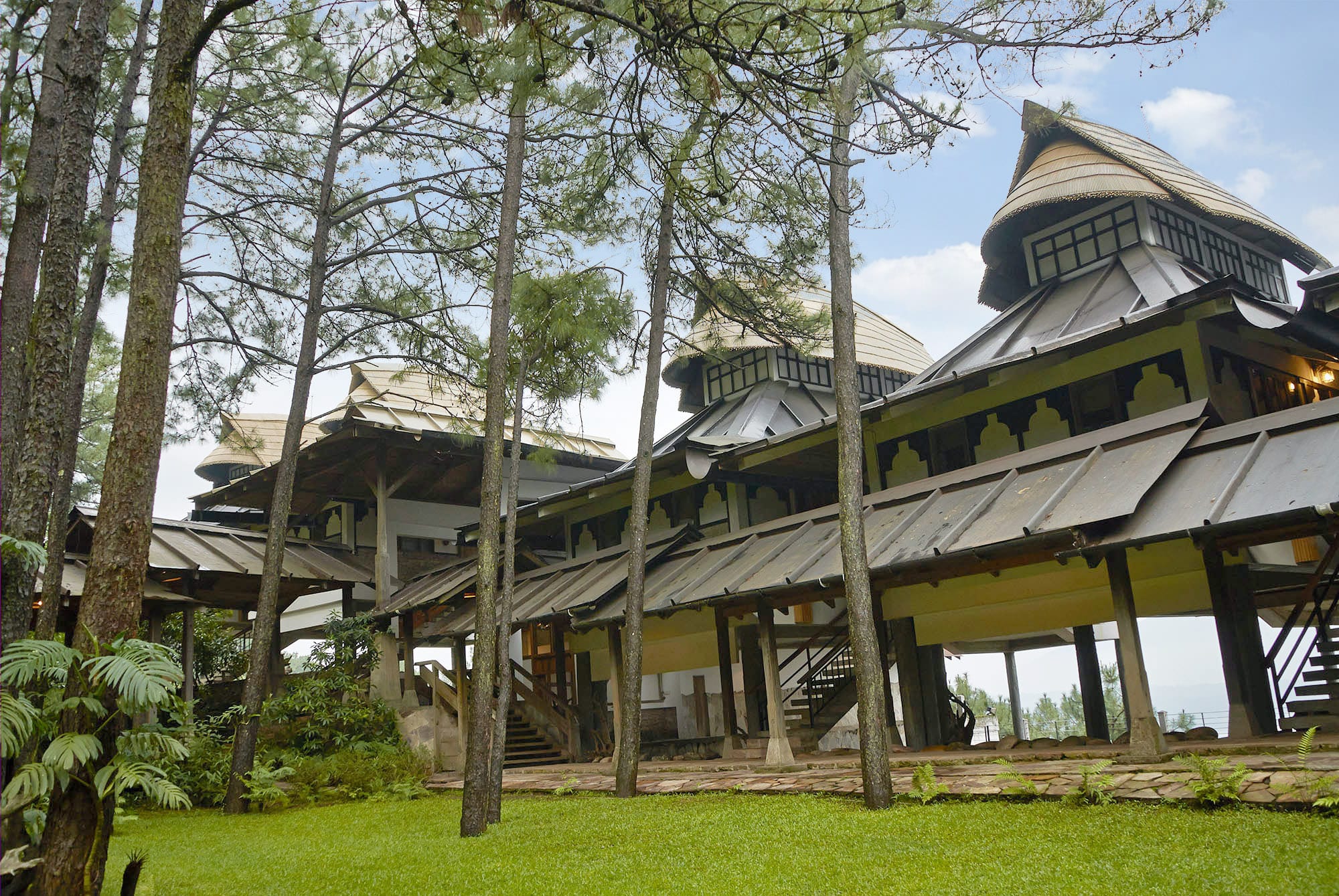
The serene, silent world is back the next morning and with the lingering fragrance of rain-drenched earth we set out to explore Shillong. But before we soak ourselves in its old colonial charm, we head towards Lewduh the amazing open-air traditional market of the city. The women-run marketplace is a miniature of the matrilineal society of Meghalaya. Here in Meghalaya husbands move to their wives’ home after marriage, children are known by their mothers’ surnames and the youngest daughter becomes the heir of the entire property. You can try some delectable local dishes here in this market and buy Khasi knives, feathered arrows, cane and bamboo handicrafts and handwoven shawls as wonderful souvenirs.
After a short coffee break we leave the city and wander through the streets that line up old colonial buildings, the lush green meadows of the 18-hole golf course with pine groves all around, popularly known as the Gleneagles of the East and finally stop at the Don Bosco museum. It has a unique hexagonal architecture and here you can delve into the culture, custom and lifestyle of all the native tribes of North East India and its neighboring countries through a wide array of artefacts, motifs, photographs, sculptures and portraits. All the 17 galleries are the fascinating documentations of different tribes since their origin and migration.
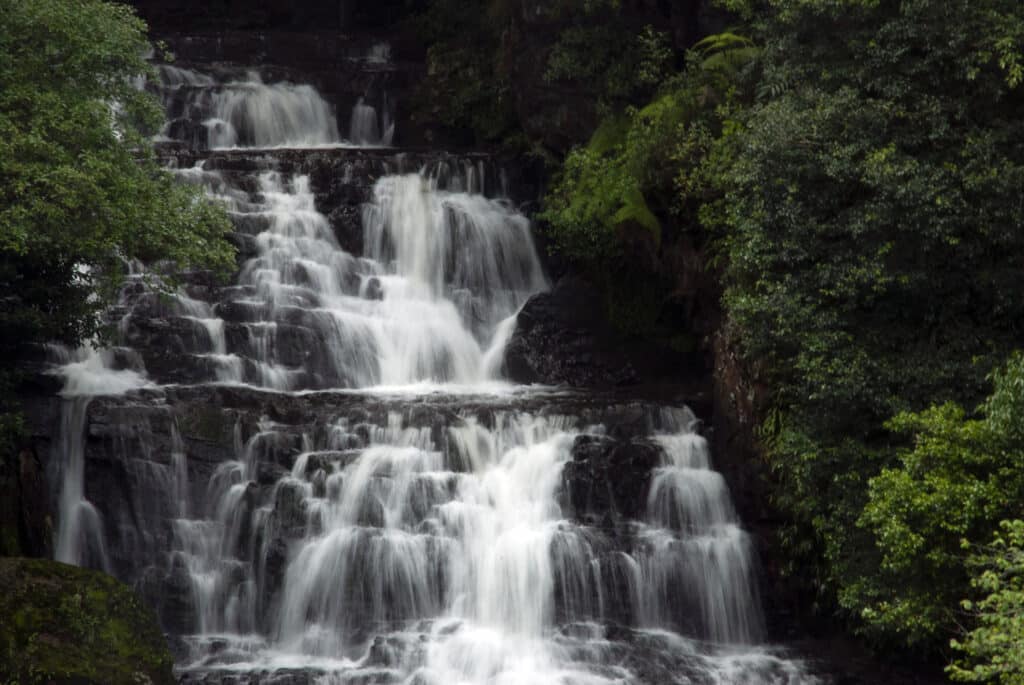
We saunter along the green slopes of the Ward’s Lake in the mellowed afternoon and carry on with our exploration of the famous Elephant Falls, the cascading waterfall in the outskirts of Shillong. The rock that resembled elephant has been destroyed by the earthquake but the foamy water tumbling down the forest slopes with its thunderous sounds is a captivating sight to behold!
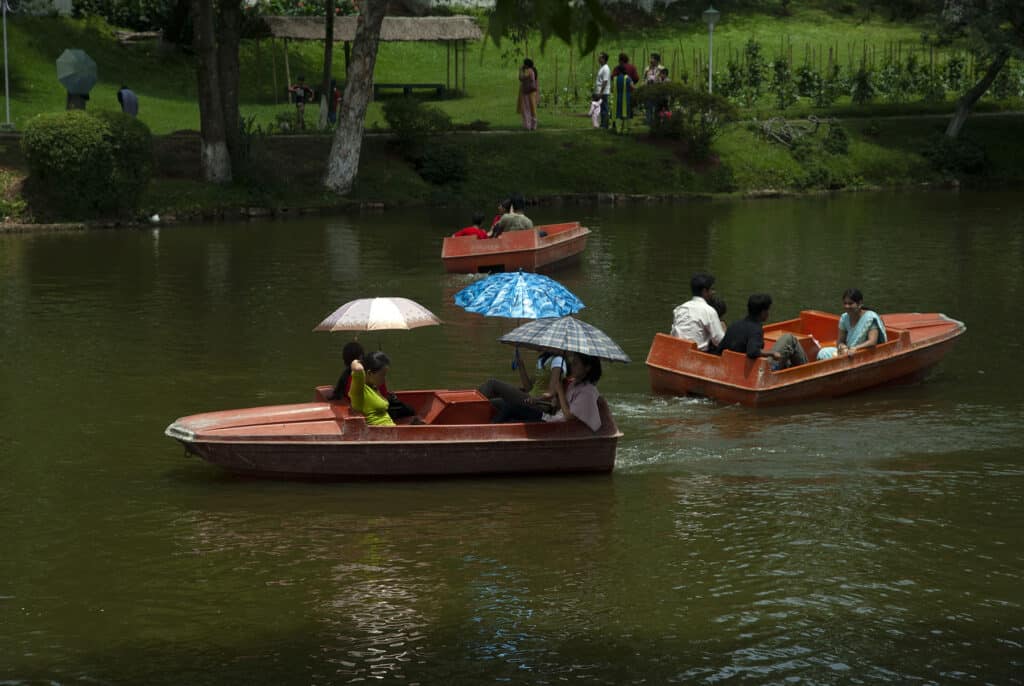
As the dusk sets in and huge dark clouds gather in the western sky of the Scottish Highlands of the East, we drive back to Ri Kynjai to drink deep the ethereal beauty of Umiam Lake before it disappears again in the realm of cloud and rain.
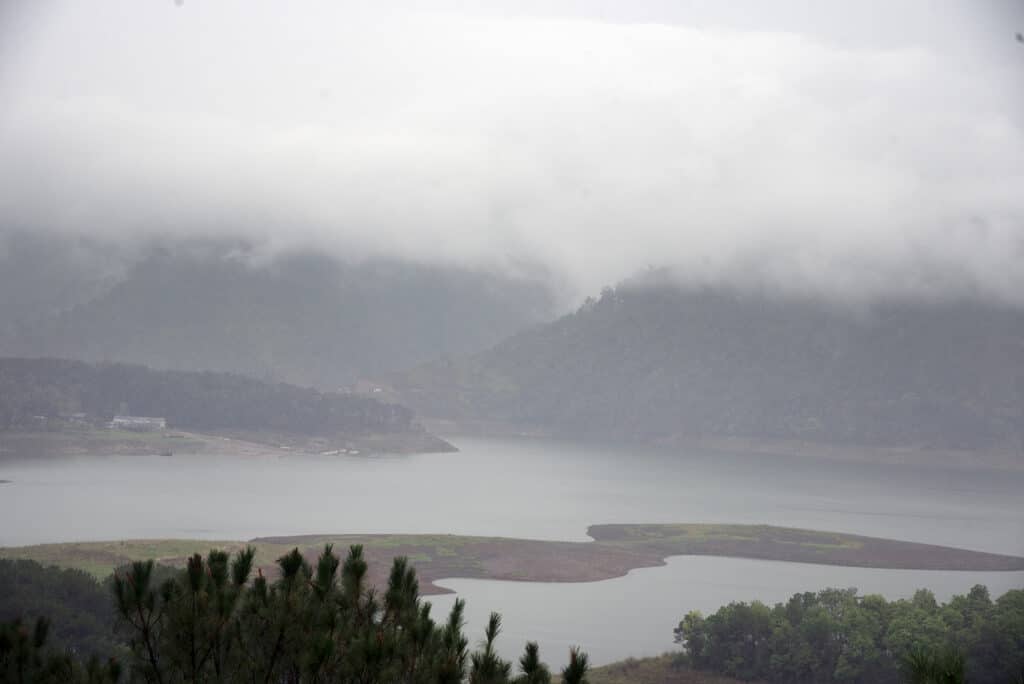
COVER: Ri Kynjai is built into the forested slopes of a hill adjacent to the lake. Photo is courtesy of Ri Kynjai
Book Your Stay in Ri Kynjai, Meghalaya, India
Search, compare and book hotels & rentals at the best prices that are sourced from major booking sites including Booking.com, Hotels.com, Expedia, Vrbo and more. You can move the map to search for accommodations in other areas and also use the filter to find restaurants, purchase tickets for tours and attractions and locate interesting points of interest!


A Kolkata-based teacher, Bandita Mukherjee is an avid traveller. In her pursuit to dig deep into the diverse landscapes, cultures and customs, she has visited 18 countries and counting. But while she is thrilled to hike unknown terrains, explore cities steeped in history and understand the culinary scene of every new place she travels into; the nuanced textures of her native India is what she finds most exciting as a compulsive traveller. When she is not teaching or on-the-go, she can be found making her next trip plans, with a mug of fresh Darjeeling tea and her pet cat curled up by her side.
Very interesting and inspiring to hear from such travellers,your story enlightened us of some unknown facts which lies hidden even though we reside near the places you visited. Keep writing and travelling.